HD Readiness:
Video quality is becoming more important than ever on today's graphics cards, especially when it comes to certain HD Video formats, like H.264 and VC-1, which can eat even a dual-core CPU for breakfast. Thus, it comes as no surprise to learn that AMD has boosted its high-definition video capabilities in the Radeon HD 2000 series, especially considering the cards have an HD suffix in the product name.Like the GeForce 8800 GTX and GTS, the Radeon HD 2900 XT supports a pair of dual-link DVI connectors, allowing you to drive two 30 inch monitors at 2560x1600 if your bank manager lets you. However, unlike the G80-based cards, the Radeon HD 2900 XT supports HDCP over a dual-link DVI connection. Of course, Nvidia's mid-range GeForce 8-series graphics products support this feature, but they're a fraction of the price and will deliver a fraction of the performance in games.
In addition, the card is bundled with a DVI-to-HDMI converter that also carries sound. This is by virtue of the fact that AMD has implemented an audio controller into its R600 family of GPUs (this includes the lower-end parts, too), meaning that there is no need for messy S/PDIF audio cable routing.
The port is HDMI 1.2 compliant, which may seem like an oversight on AMD's part, because there are a lot of new features in HDMI 1.3. However, when you think about it more, it makes complete sense. You see, HDMI 1.3 supports a 36-bit colour depth via the new Deep Colour feature (something that should start appearing in HD movies soon) but Windows cannot support colour depths above 32-bit, making the feature a bit pointless on a PC graphics card.
Of course, you're going to miss out on Dolby Digital Plus, Dolby TrueHD and DTS HD Master Audio because the HDMI port isn't version 1.3 compliant too. However, it's questionable whether that is an issue on the PC because anyone who's serious about HD video is unlikely to be using their PC as the source device, even with its potentially superior image quality. Finally, there is also no support for 8-channel soundtracks, as the HDMI port can only output 6-channel audio.
Unified Video Decoder:
With G84 and G86, Nvidia improved its video decoding abilities by moving bitstream processing and AES128 decryption from the CPU to the GPU for H.264 video streams. H.264 is currently by far the most resource intensive video codec, such that even a dual-core CPU can't cope with the high bit rates H.264 content often runs at (up to 40Mbps). G80 doesn't include this feature, so you're going to see high CPU utilisation during H.264 and VC-1 playback.AMD has implemented this into its HD 2400 and HD 2600 graphics processors, but has also added full CPU offload for VC-1 decoding, too. This task is appreciably less intensive than decoding H.264, but the power savings should be significant enough for it to be a worthwhile addition.
Bizarrely though, there is no dedicated silicon for either CABAC/CAVLC decoding or post processing in the Radeon HD 2900-series hardware. Instead, AMD uses the stream processors for both tasks. We're not sure what impact this will have on CPU load during HD video playback, but that's beyond the remit of this article and we'll be revisiting HD video decode performance at a later date.

MSI MPG Velox 100R Chassis Review
October 14 2021 | 15:04


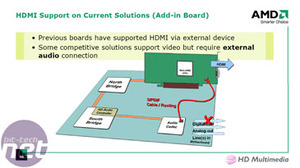

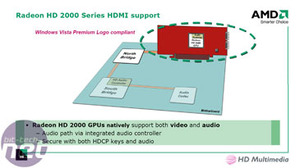
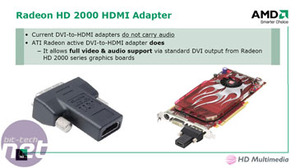
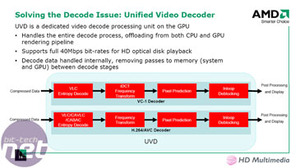

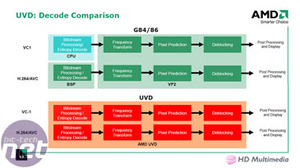
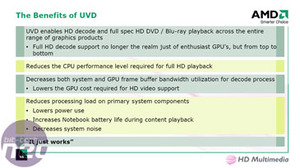







Want to comment? Please log in.